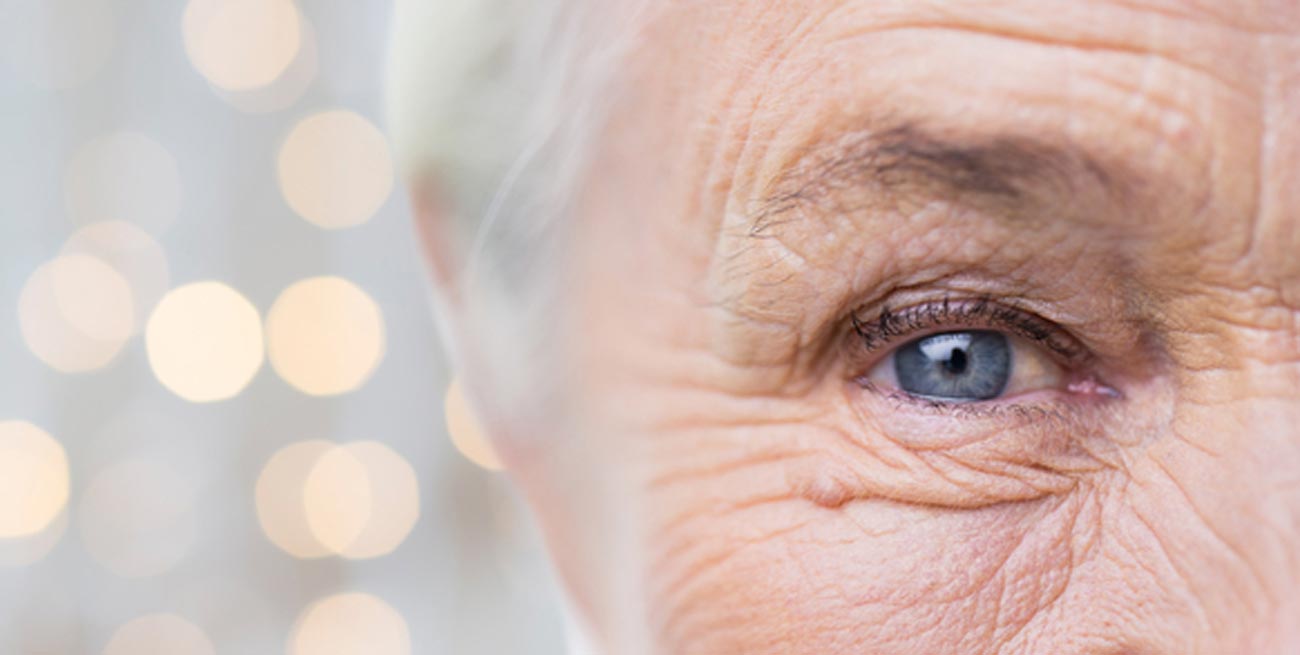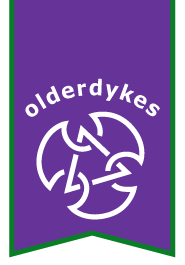
17 Jan It’s none of my business: gay and lesbian invisibility in aged care
by Jo Harrison
School of Occupational Therapy, University of South Australia
Introduction
My background is in social work, social research and education in gerontology. I have worked with consumer organisations, advocacy services, Aboriginal Councils and educational institutions for over 23 years. I have also been a board member of AIDS organisations and human rights organisations.
The issues raised in this paper, however, are relevant to all health and social service professionals working in aged care. Additionally, because occupational therapy practice is focused on people’s occupations, including interactions taking place between ‘sexed’ actors, an understanding of the impact of assumptions around sexuality is particularly appropriate to occupational therapists. My background has caused me to begin to look broadly at questions around acknowledgement of difference in gerontology (Harrison, 1997).
In this paper I argue that, in Australia, gerontology literature and practice has failed to recognise that just as there is a view of ageing which is not Anglo-Celtic, there is a perspective which is not necessarily heterosexual. Just as indigenous people do not look at the world through non-indigenous eyes, so too, non-heterosexual people have a perspective that differs from that of the heterosexual majority. One could speculate that such a different viewpoint could well impact on the experience of ageing. This, in turn, could impact on the work of occupational therapists in aged care.
Non-Australian researchers in occupational therapy, such as Jackson (1995, 2000), Birkholtz and Blair (1999), Walsh and Crepeau (1998) and Kingsley and Molineux (2000) have addressed issues related to: occupational therapists’ attitudes and understandings around sexuality; the relationship between sexual identity and occupation; and the homophobia experienced by lesbian therapists in clinical settings. Such researchers refer to the importance of authentic occupational therapy and see it as critical that issues around homophobia be addressed if therapy is to be client centred and enable the realisation of personal meanings (Law, 1998). The issues raised by researchers investigating sexual identity and occupational therapy have not included a specific focus on the area of aged care, where issues around life history and fear of discrimination may play an important role in therapy.
The Concept of Privacy
Recently I presented a seminar on gay and lesbian ageing to a group of students in a postgraduate program in gerontology. The title of this Viewpoint is drawn directly from their reactions to the presentation. My seminar evoked comments such as: ‘But it’s none of my business’; ‘This is people’s private business’ and ‘It’s only their needs that matter, just treat people the same, don’t ask or think about sexuality.
My presentation included a case study of a distressed woman admitted to a nursing home. This woman felt unable to reveal that the ‘friend’ accompanying her at admission was really her lifetime partner, who would then be denied the same visiting, next of kin, and decision making rights as the new resident’s children. When I asked the group what could be done to alleviate the women’s distress and reassure them, one student responded: ‘It’s a private issue, there’s nothing you can do about it.’
This notion of ‘privacy’ closely relates to the notion of ‘taboo’ in the findings of Kingsley and Molineux (2000) around base grade therapists’ lack of appreciation of the role of sexual orientation in occupation. Like taboo, the concept of privacy, in this context, serves as a barrier to full understanding of a client’s life experiences and understandings. It concerns me that gerontologists and students who see sexuality as ‘private’ are not unlike those who see domestic violence as ‘private’.
I would not advocate mass ‘outing’ (disclosure of sexual orientation) of elderly gays or lesbians. Nor do I think that assisting the resident and her partner in the case study required them to necessarily talk about their relationship. Certain practices, language, symbols and ways of treating people could indicate to the women that they are in a non-discriminatory environment and can feel comfortable. For example, a verbal interview or a written question on an intake form could refer to ‘significant people’ rather than ‘husband or wife’. What response might follow from such an open approach is still the client’s choice, but this practice puts the onus on the therapist to indicate that the therapy environment is one of acceptance.
I have been told by therapists that subtle signals of openness have resulted in clients revealing significant issues and concerns around occupation that would have otherwise remained hidden and not addressed. In one instance, to have failed to address one of the issues which emerged could have resulted in harm to the client, who was experiencing serious concerns around safe sex.
It could be argued that sexuality and sexual identity are not private and never were. Public institutions, including the legal system, tax system, church, marriage, welfare, all operate within the public realm and regulate and legislate sexuality and the heteronormativity of daily life. This all takes place within a heterosexually dominant framework (Lamley-Brown, 1999). As Bell & Valentine (1995) point out, heterosexuality is clearly the dominant sexuality in most everyday environments, not just private spaces, with all interactions taking place between ‘sexed’ actors.
In my view, Australian gerontology, including occupational therapy with the aged, is not yet challenging this heterosexing of space: spaces in which elderly people are provided with services, spaces within which they live, and spaces within which they are taught about, written about and researched.
The concept of heteronormativity
The concept of heteronormativity refers to a general perspective which sees heterosexual experience as the only, or central, view of the world. Such a view is not dissimilar to the assumption that all elderly people and their carers are of Anglo-Celtic culture. It seems that there has been a shift in Australian gerontology over the past two decades, in that policy documents, curricula, research reports, journal articles, texts, conference papers, training modules and practice discussions reflect a greater awareness of issues related to ethnic and indigenous culture. This is not, however, the case in relation to gay and lesbian cultural experience. Such an absence of recognition of diversity around sexuality issues underpins aged care in Australia today (Harrison, 1999).
In an ageing Australia, occupational therapists are going to be increasingly concentrated in the field of gerontology, working in various settings with elderly people. The way in which they understand sexual identity in a gerontology context could have a serious impact on the value of their therapeutic interventions. In the field of aged care, the concept of sexuality is too often seen as equivalent to the behavioural or biological understanding of sexual activity, rather than as a component of an identity with many facets, similar to culture.
I agree with Hartmann and Laird (1999) who claim that, in seeking to describe non-heterosexual experience, one needs to use the notion of culture as a metaphor, because it is the closest conceptual construct currently available to assist in describing sexual identity’s significance to an individual’s life. Australian aged-care professionals including occupational therapists who work in that field are currently being left behind the progress made by social movements such as the Australian gay and lesbian movement.
Australia has seen a wave of social action, human rights struggles, legal changes, changes in public opinion, changes in people’s lives and the lives of their families and partners over the past 20 years. The challenge for those who work in the field of ageing, including occupational therapists, is to develop understandings around sexual difference. This would lead to the aged care industry being able to provide quality service to future clients, including gays and lesbians who have not led closeted lives and who are needing non-judgemental care and support.
Overseas developments
In contrast with Australia, change has taken place in particular areas of the USA in relation to gay, lesbian, bisexual and transgender ageing. Some examples of such change include: the setting up of a National Association of Lesbian and Gay Gerontology; policy recommendations to the 1995 White House Conference on Ageing put forward by gay and lesbian representatives at the Conference; the development of the American Society on Aging Lesbian and Gay Ageing Issues Network, which has a comprehensive web site and resource base; establishing social service, legal and policy organisations dedicated to gay and lesbian elders in several cities; and development of curricula which included gay and lesbian ageing issues in some tertiary education programs. These are the types of initiatives that may assist a process of change in Australia, and lead to gerontologists, including occupational therapists with the aged, being able to assist clients in an appropriate context of trust and confidence.
The views of activists
Recent research I conducted revealed the viewpoints of activists who had worked in aged consumer rights or gay and lesbian rights around this question of privacy. Comments from activists included:
‘I think that in fact what that privacy attitude is doing is the same as what most of society does, which is kind of about gay and lesbian people at any age, trying to get them to not declare their sexuality, trying to get them to not relate to things differently, so I think that it’s very much a continuation of that pressure. But it, sexuality, does make a difference. It makes people feel that they have to be very closed. Well how can you meet needs when you don’t know what they are? It sounds like an attempt to homogenise everybody. If we are not encouraged to articulate our needs how can they be met? What that’s saying is, we should stay in the closet and not be out and allow the world to go on assuming we’re all heterosexual. The broader community has always taken that attitude, that we should keep it in private.’
Evidently, amongst the activists interviewed, there was much disdain for the notion of sexual preference as ‘private’ and therefore invisible. It seems to be somewhat like a vicious circle; as long as we maintain notions of ‘privacy’ we are not encouraging public discussion or discourse. This means that there is no sense of a safe environment in which people might come out (reveal their sexual orientation). Thus, there is no challenge to the ‘heterosexed’ spaces and the cycle of invisibility continues.
What chance for change?
Research that I am currently conducting focuses on breaking this cycle in the public realm, and the way in which activists foresee and report action occurring, through social movements, towards creating change in gerontology in Australia and the USA. It involves analysis of Australian texts and research reports, analysis of American archival documents, and interviews with activists in both countries.
The text analysis has revealed that heteronormative assumptions underpin Australian gerontology literature, particularly where the literature discusses notions of family, the nature of caring relationships, taxation, superannuation and ‘special needs groups’. Terms such as ‘the never married’ and ‘spouse carer’ are scattered throughout the Australian literature. Reports of quantitative studies describe household composition and family relationships in heteronormative terms. Changes need to take place at a broad structural level, as well as in the interpersonal realm, if we are to ensure quality of care regardless of sexual identity. At a structural level, legal change is important, as it affects behaviour and changes understandings.
Recently, openly gay Australian judge Michael Kirby called for legislative reforms across Australia to outlaw discrimination on the basis of sexuality. The Prime Minister’s response to this call for reform was ‘I don’t want to talk about his private life, that’s his business. It’s none of my business’ (McGregor & Lane, 1999; p. 14). This response echoes the mindset of those gerontologists, students and therapists for whom the challenge is to begin to recognise that it is the business of all of us to ensure fair and equal quality care for all our clients. If we see our roles as practitioners in any sphere as enabling the ‘doing, being and becoming’ of human beings (Wilcock, 1999) surely we will recognise the privacy argument, in this context, as a potentially dangerous cop out and a serious obstacle to people realising their human potential with their sexual identities as integral.
Published in the Australian Occupational Therapy Journal (2001) 48, September 2001
REFERENCES
Bell, D. & Valentine, G. (1995). Mapping desire: Geographies of sexualities. New York: Routledge. Birkholtz, M. & Blair, S. (1999). ‘Coming out’ and its impact on women’s occupational behaviour – a discussion paper. Journal of Occupational Science, 62, 68-74.
Harrison, J. (1997). Social policy and Aboriginal people. In: A. Borowski, S. Encel & E. Ozanne (Eds), Ageing and social policy in Australia (pp. 119-136). Cambridge: Cambridge University Press.
Harrison, J. (1999). A lavender pink grey power: Gay and lesbian gerontology in Australia. Australasian Journal on Ageing, 18, 32-37.
Hartmann, A. & Laird, J. (1999). Social constructionism and feminism in family-centred practice. Paper presented at the Narrative Therapy and Community Work Conference, Adelaide, February 17-19.
Jackson, J. (1995). Sexual orientation: Its relevance to occupational science and the practice of occupational therapy. American Journal of Occupational Therapy, 49, 669-679.
Jackson, J. (2000). Understanding the experience of non-inclusive occupational therapy clinics: Lesbians’ perspectives. American Journal of Occupational Therapy, 54, 26-35.
Kingsley, P. & Molineux, M. (2000). True to our philosophy? Sexual orientation and occupation. British Journal of Occupational Therapy, 63, 205-210.
Lamley-Brown, N. (1999). Dominant voices and dialogue: Exploring heterosexual dominance in social work practice. Unpublished Honours Thesis. School of Social Work and Social Policy, University of South Australia, Adelaide, Australia.
Law, M. L. (Ed.). (1998). Client-Centred OccupationalTherapy. Thorofare: SLACK Inc.
McGregor, R. & Lane, B. (1999). Kirby’s sexuality not my business, says PM. The Australian, July 10-11, 14.
Walsh, A. & Crepeau, E. (1998). ‘My secret life’: The emergence of one gay man’s authentic identity. American Journal of Occupational Therapy, 52, 563-569.
Wilcock, A. (1999). Reflections on doing, being and becoming. Australian Occupational Therapy Journal, 46, 1-11.
Jo Harrison BSocStud(Hons), MGerontol; PhD Scholar. Correspondence: Jo Harrison, School of Occupational Therapy, University of South Australia, North Terrace, Adelaide, SA 5000, Australia. Email: jams@camtech.net.au






Sorry, the comment form is closed at this time.